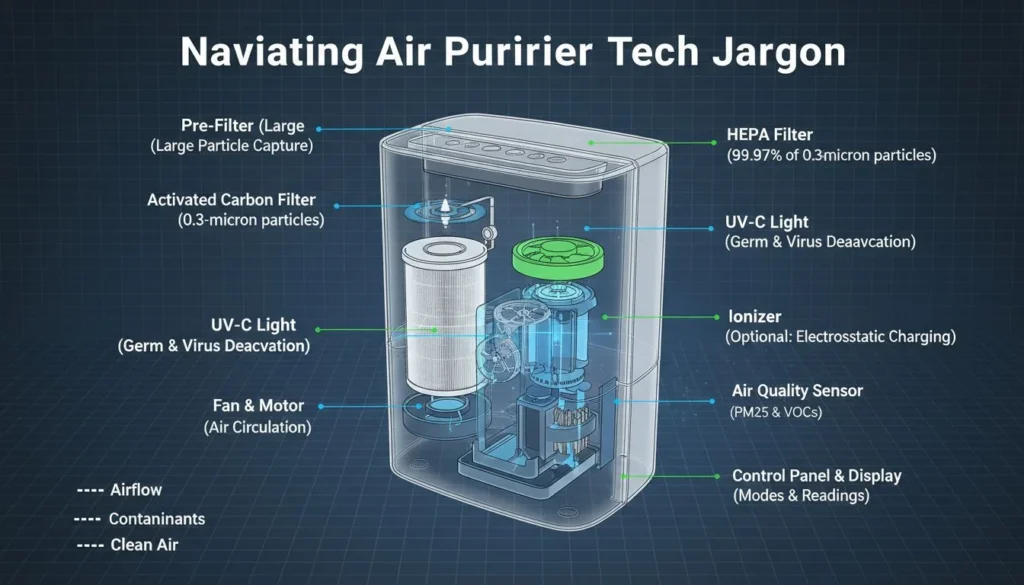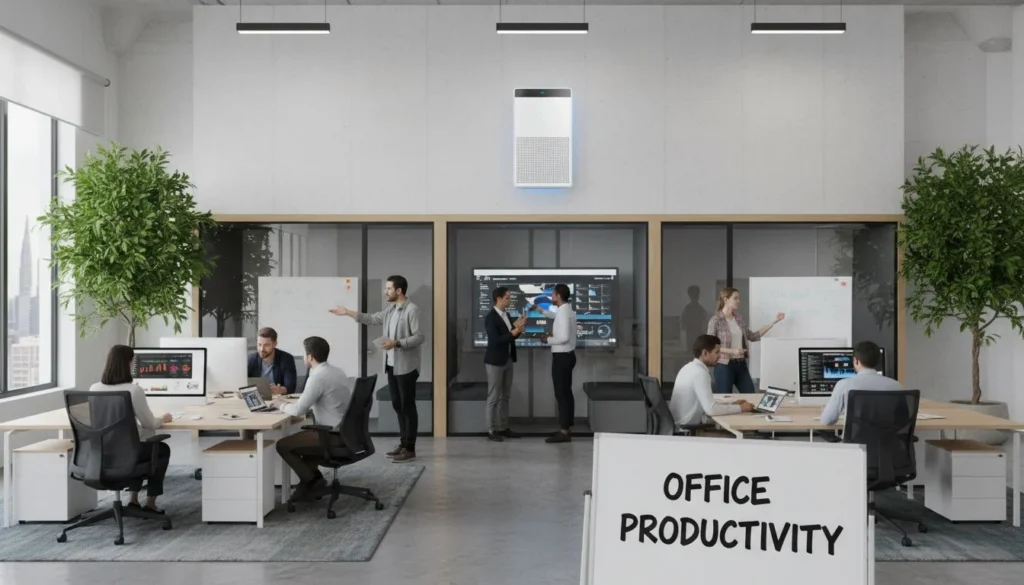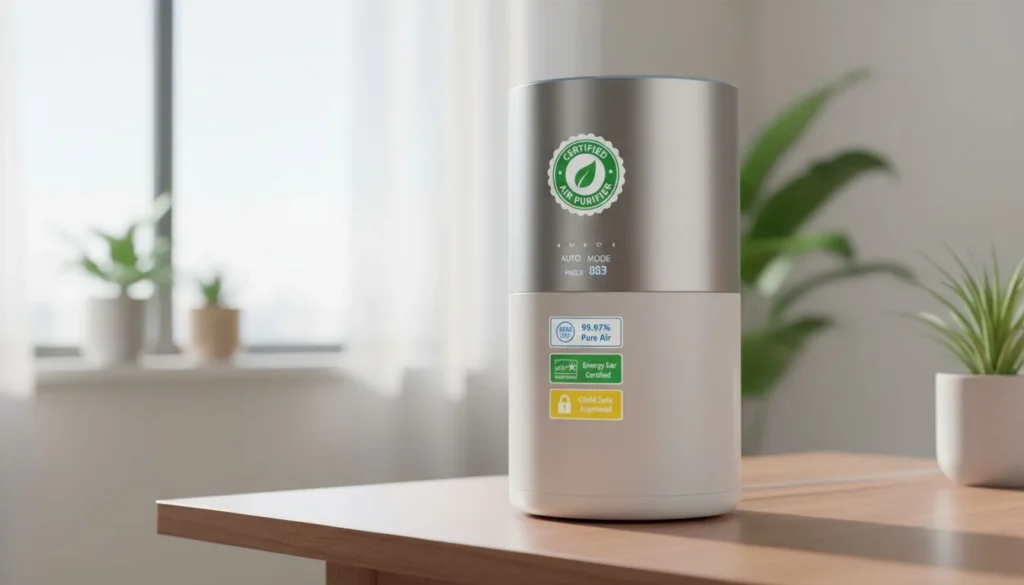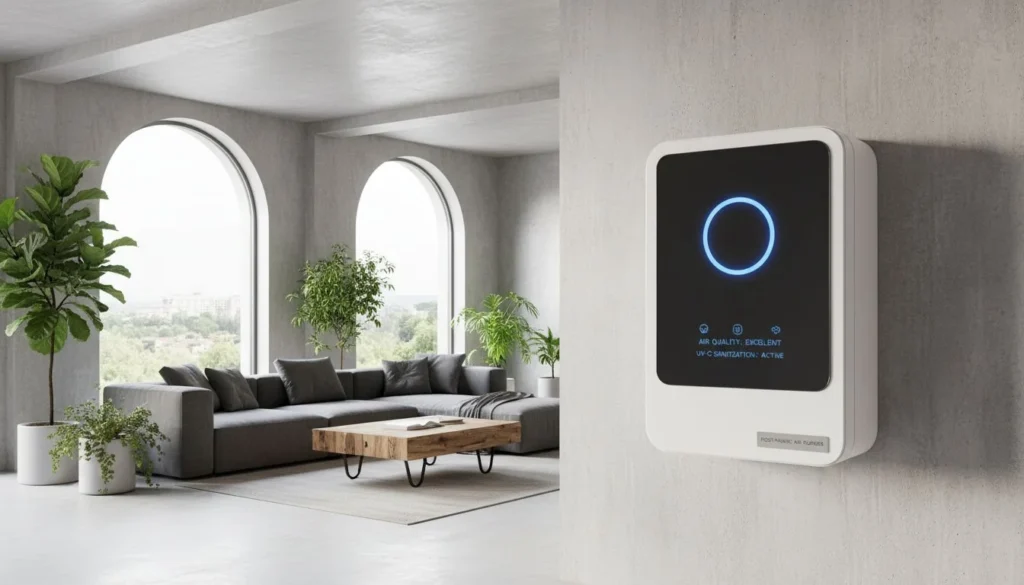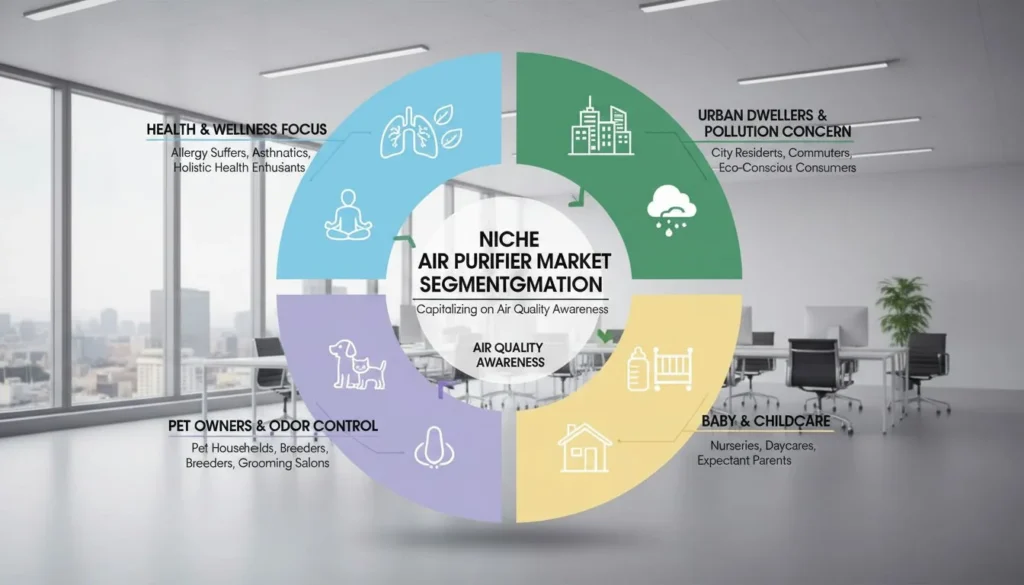In the meticulously controlled environment of modern data centers, where millions of dollars worth of equipment process our world's most valuable information, an often overlooked yet critical factor stands between optimal operation and potential disaster: humidity control. While temperature management receives significant attention in data center design and operation, precision humidity control represents an equally vital component of infrastructure protection that deserves specialized consideration.
As data centers continue to increase in density and processing power, the challenges of maintaining ideal environmental conditions become more complex. Too little humidity creates an environment ripe for electrostatic discharge (ESD) events that can damage sensitive components, while excessive moisture risks condensation and corrosion. Finding and maintaining the perfect balance requires sophisticated humidification technology specifically engineered for these demanding environments.
At HisoAir, our extensive work with data center operators has revealed that many facilities struggle with humidity control challenges that impact reliability, energy efficiency, and operational costs. This comprehensive guide explores the science behind data center humidification, examines the latest industry standards, compares available technologies, and presents innovative solutions designed to protect your critical infrastructure.
Data Center Humidity Control: Core Principles and Standards
Understanding the fundamental principles of humidity control in data centers begins with recognizing the industry standards that guide best practices and the scientific rationale behind them.
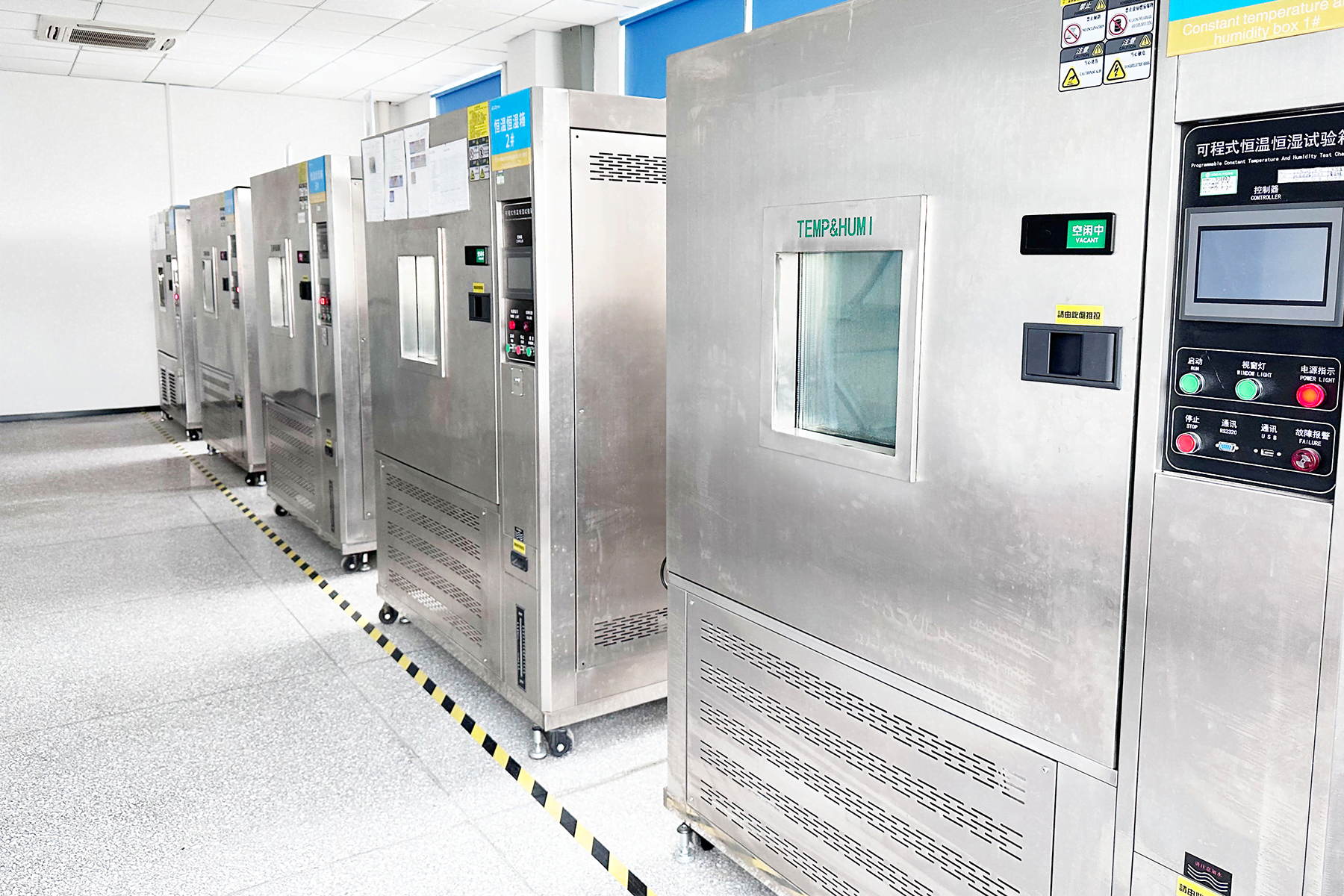
ASHRAE Standards: The Foundation of Data Center Environmental Control
The American Society of Heating, Refrigerating and Air-Conditioning Engineers (ASHRAE) provides the most widely accepted guidelines for data center environmental conditions through its Technical Committee 9.9. These ASHRAE standards1 have evolved significantly over the years, reflecting both technological advancements and a deeper understanding of equipment requirements.
The current ASHRAE recommendations define several environmental classes for data centers, with the most common being Class A1 to A4. For typical enterprise data centers (Class A1), the recommended humidity range is:
- Dew point: 5.5°C to 15°C (41.9°F to 59°F)
- Relative humidity: 20% to 80%
These ranges represent a significant expansion from earlier, more conservative guidelines, reflecting research showing that modern IT equipment can safely operate across a wider environmental spectrum than previously believed. This expansion offers substantial opportunities for energy savings and operational flexibility.
The Science of Relative Humidity vs. Dew Point Temperature
When discussing data center humidity control2, it's crucial to understand the relationship between relative humidity (RH) and dew point temperature, as both metrics provide valuable but different insights.
Relative humidity expresses the percentage of moisture in the air relative to what the air could hold at that temperature. However, this measurement can be misleading in data centers because it changes with temperature fluctuations even when the actual moisture content remains constant. As air temperature increases, relative humidity decreases, even though the absolute moisture content hasn't changed.
Dew point temperature, by contrast, represents the temperature at which air becomes saturated and condensation begins to form. This measurement remains constant regardless of air temperature changes, making it a more reliable metric for data center humidity control. Modern data center environmental management increasingly focuses on dew point control rather than relative humidity for this reason.
The Dual Risks: Too Dry vs. Too Humid
Data center operators must navigate between two opposing humidity-related risks:
Low Humidity Risks:
- Increased potential for electrostatic discharge (ESD)
- Static electricity buildup on equipment and personnel
- Potential damage to sensitive electronic components
- Increased risk of hardware failures and data corruption
High Humidity Risks:
- Condensation on equipment and building surfaces
- Accelerated corrosion of metal components
- Potential for water damage to electronic systems
- Growth of mold and microorganisms
- Reduced cooling efficiency
Finding the optimal balance between these extremes requires precision control systems capable of responding to changing conditions while maintaining stable humidity levels throughout the facility.
![]()
Electrostatic Discharge Protection: The Humidity Connection
One of the primary reasons for maintaining adequate humidity levels in data centers is to mitigate the risk of static electricity3 damage to sensitive electronic components.
The Mechanism of Static Electricity Formation
Static electricity develops when electrons transfer between materials, creating an imbalance of electrical charge. In low-humidity environments, these charges can accumulate rather than dissipate naturally, eventually leading to a sudden discharge when the charged object comes into contact with a conductor.
Water molecules in humid air act as natural conductors that help dissipate static charges before they can build to dangerous levels. When relative humidity falls below 30%, the risk of static electricity accumulation increases significantly. At extremely low humidity levels (below 20%), even normal movement of personnel can generate static charges exceeding 10,000 volts—more than enough to damage sensitive electronic components.
Quantifying ESD Risk Across Humidity Levels
Research conducted by the Missouri University of Science and Technology in collaboration with ASHRAE has provided valuable insights into the relationship between humidity levels and ESD risk in data center environments. Their findings demonstrate a clear correlation between decreasing humidity and increasing ESD events:
| 상대 습도 | Average ESD Voltage | 위험 수준 |
|---|---|---|
| 15-20% | 8,000-12,000V | 매우 높음 |
| 20-30% | 4,000-8,000V | 높음 |
| 30-40% | 2,000-4,000V | 보통 |
| 40-60% | 500-2,000V | 낮음 |
| >60% | <500V | Very Low |
Most modern electronic components are designed to withstand ESD events of 2,000V or less, highlighting the importance of maintaining humidity levels above the 30% threshold in environments where sensitive equipment is present.
Industry Research: The Evolving Understanding of Humidity Requirements
Recent research has challenged some traditional assumptions about humidity requirements in data centers. A comprehensive study funded by ASHRAE examined the relationship between humidity levels and equipment failures attributed to ESD. The research found that:
-
Modern data center design practices (including proper grounding, conductive flooring, and ESD-protective equipment) significantly reduce ESD risks even at lower humidity levels.
-
Personnel following proper ESD-safe procedures (wrist straps, conductive footwear) can safely work in environments with relative humidity as low as 15% without increasing ESD risk.
-
The relationship between humidity and ESD risk is not linear—increasing humidity from 15% to 25% produces a more significant risk reduction than increasing from 45% to 55%.
These findings have supported the trend toward wider acceptable humidity ranges in data centers, allowing operators to reduce humidification energy costs while maintaining adequate protection against ESD events.
Data Center Humidification Technologies: A Comparative Analysis
Several humidification technologies are available for data center applications, each with distinct advantages and limitations. Understanding these differences is crucial for selecting the optimal solution for specific facility requirements.
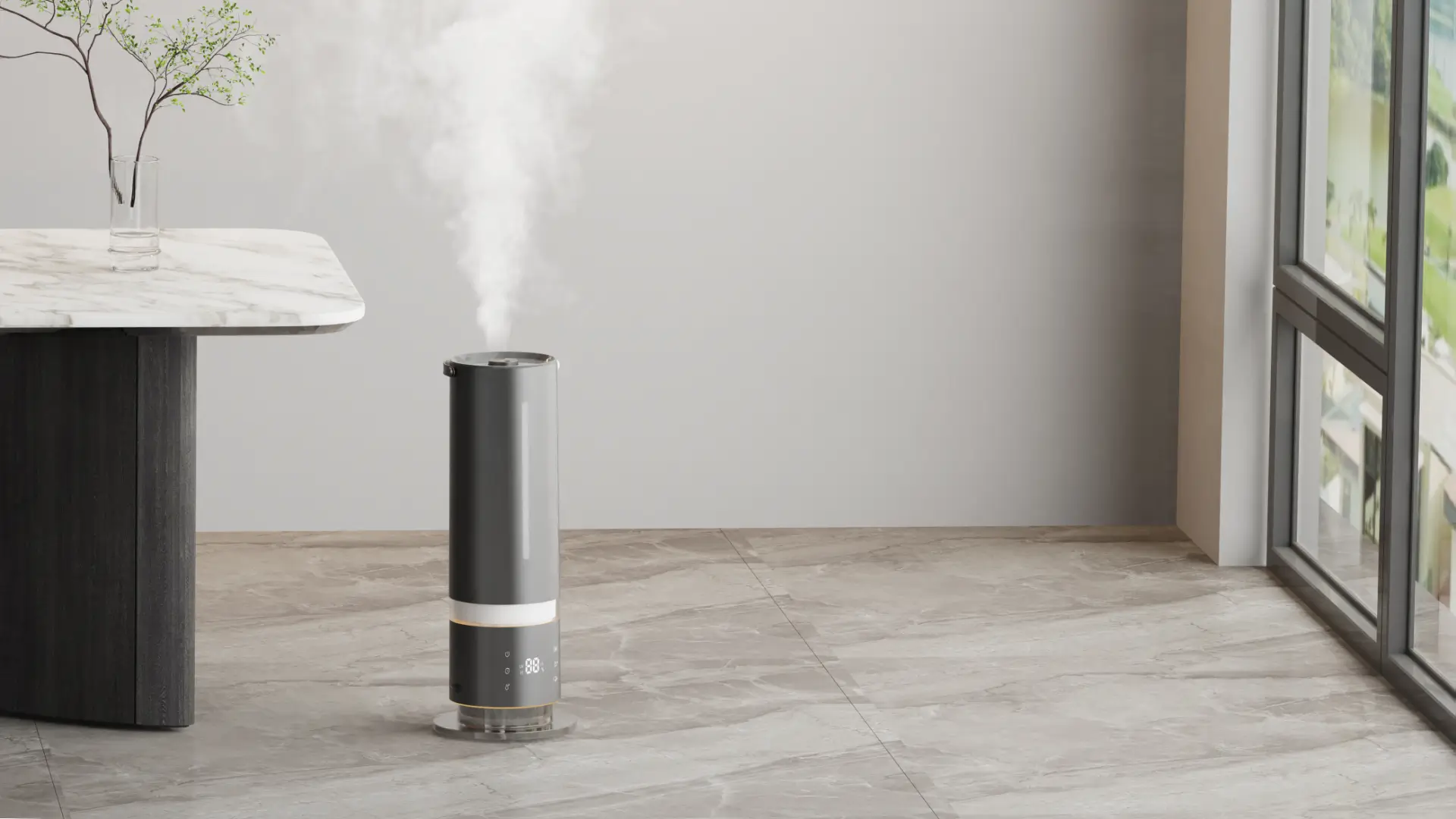
Steam Humidification Systems
Steam-based humidification4 represents the traditional approach to data center humidity control, using electrical, gas, or central plant steam to add moisture to the air.
장점:
- Precise humidity control with rapid response to changing conditions
- Hygienic operation with minimal risk of microbial contamination
- Ability to operate independently of air temperature
- Reliable performance across a wide range of environmental conditions
Limitations:
- Higher energy consumption compared to other technologies
- Significant heat addition to the airstream, potentially increasing cooling load
- Regular maintenance requirements for scale removal and electrode replacement
- Higher operational costs due to energy consumption
Steam systems remain the preferred choice for many critical facilities where precise control and reliability outweigh energy efficiency concerns. They are particularly well-suited for environments with variable loads or those requiring rapid humidity adjustments.
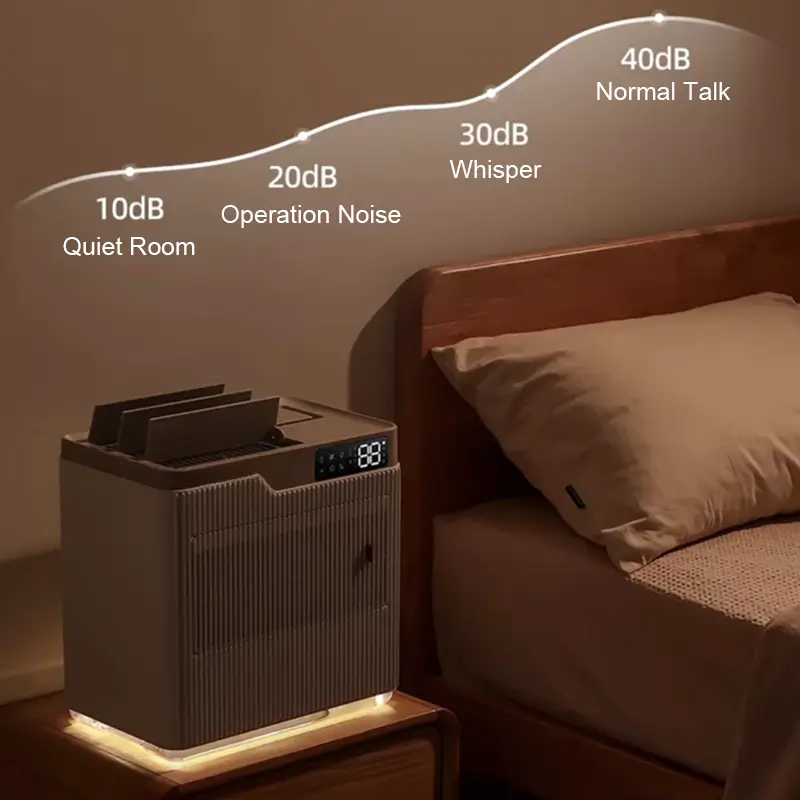
Adiabatic/Evaporative Humidification
Adiabatic humidification5 systems add moisture to the air through the natural evaporation process, using significantly less energy than steam-based alternatives.
장점:
- Substantially lower energy consumption (up to 90% less than steam systems)
- Adiabatic cooling effect that reduces overall cooling load
- Lower operational costs
- Simpler maintenance requirements
Limitations:
- Slower response to changing humidity requirements
- Potential for microbial growth if not properly maintained
- Water quality concerns requiring filtration or treatment
- Less precise control compared to steam systems
Adiabatic systems have gained popularity in data centers focused on energy efficiency and sustainability. They are particularly effective in warmer climates where the additional cooling effect provides dual benefits.
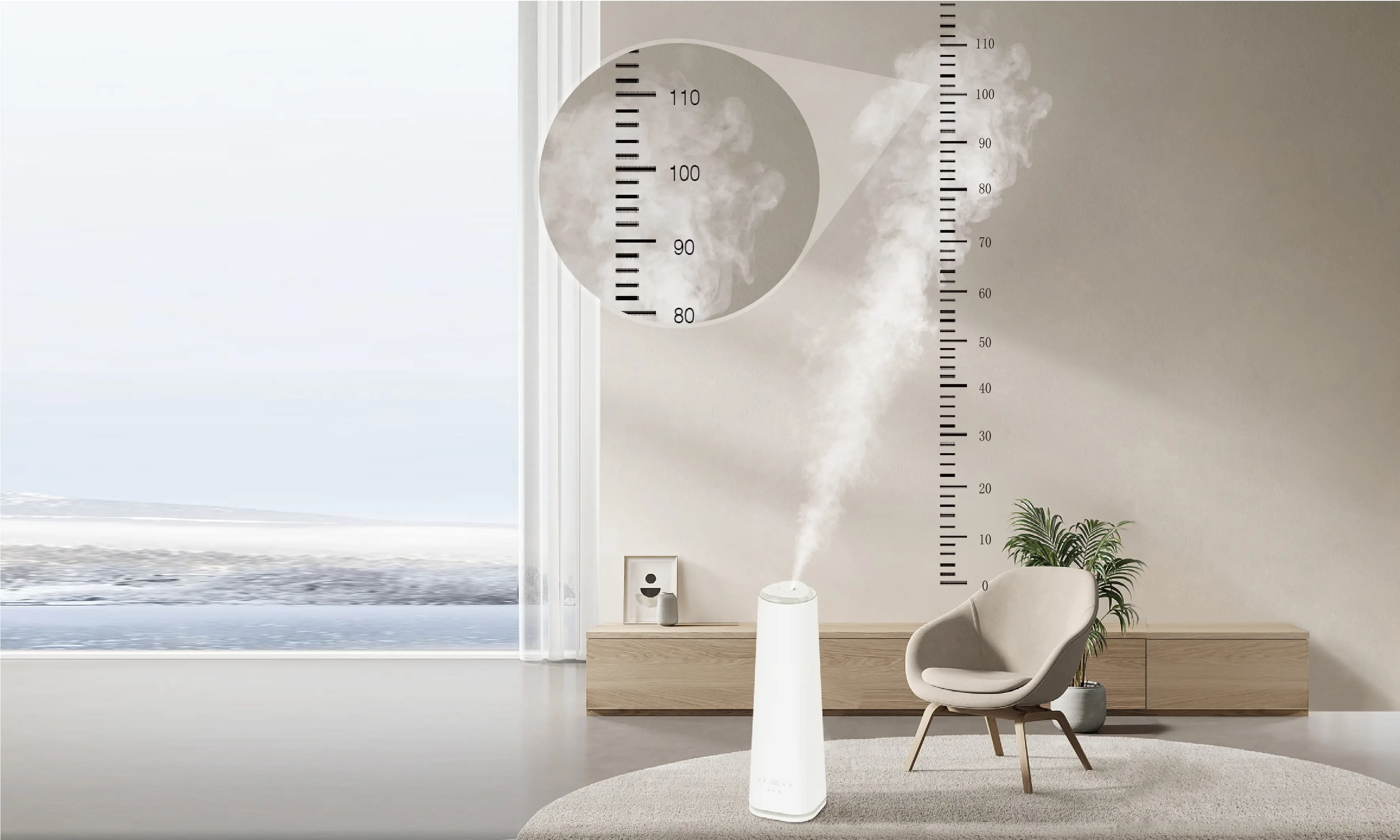
Ultrasonic Humidification Technology
Ultrasonic humidifiers use high-frequency vibrations to create a fine water mist that quickly evaporates into the air. This technology offers several unique advantages for data center applications:
장점:
- Extremely energy-efficient operation (up to 93% less energy than steam)
- No heat addition to the airstream
- Precise control capabilities
- Compact installation footprint
- Minimal maintenance requirements
Limitations:
- Water quality sensitivity requiring demineralization
- Potential for "white dust" if water is not properly treated
- Higher initial investment cost
- Limited capacity for very large installations
Ultrasonic technology represents an excellent middle ground between the precision of steam systems and the efficiency of adiabatic approaches, making it increasingly popular for medium-sized data centers.
High-Pressure Atomization Systems
High-pressure atomization6 또는 micro-mist humidification systems use specialized nozzles to create extremely fine water droplets under high pressure, allowing for rapid evaporation.
장점:
- Energy efficiency comparable to adiabatic systems
- Significant cooling effect that reduces HVAC load
- Scalable for very large installations
- Ability to distribute humidity across large areas
Limitations:
- Complex installation requirements
- Need for high-quality water treatment
- Regular maintenance of nozzles and pumps
- Potential for wetting if improperly designed
These systems excel in large data center environments where both humidification and supplemental cooling are desired, offering substantial operational cost savings in appropriate applications.
Energy Efficiency and Operational Cost Optimization
The energy implications of humidity control represent a significant consideration in data center design and operation, with humidification systems potentially consuming substantial resources if not optimized properly.
Energy Consumption Comparison Across Technologies
The energy required to convert liquid water to vapor (latent heat of vaporization) remains constant regardless of the humidification method. However, the energy source and efficiency of the conversion process vary dramatically:
| 기술 | Energy Consumption (kWh per kg of water) | Relative Efficiency |
|---|---|---|
| Electric Steam | 0.75-0.85 | Baseline |
| Gas-Fired Steam | 0.65-0.75 | 10-15% better |
| 초음파 | 0.04-0.06 | 90-95% better |
| High-Pressure Atomization | 0.02-0.04 | 95-97% better |
| Adiabatic/Evaporative | 0.01-0.03 | 96-98% better |
These efficiency differences translate directly to operational cost savings. For a typical 1MW data center requiring 100 kg of water vapor daily, the annual energy cost difference between steam and adiabatic humidification can exceed $25,000.
Synergistic Effects: Humidification and Cooling
One of the most significant advantages of non-steam humidification technologies is their ability to provide "free cooling" through the adiabatic effect. When water evaporates, it absorbs heat from the surrounding air, reducing the temperature by approximately 0.7°C for each gram of water evaporated per kilogram of air.
In practical terms, this means that properly designed adiabatic or ultrasonic humidification systems can reduce cooling loads by 3-5% during humidification periods, creating a double benefit of humidity control and energy savings.
Water Quality Management and System Efficiency
Water quality significantly impacts both the efficiency and maintenance requirements of humidification systems. Minerals and contaminants in untreated water can:
- Create scale buildup that reduces system efficiency
- Clog nozzles and distribution components
- Introduce particles into the airstream
- Increase maintenance frequency and costs
Implementing appropriate water quality management7 systems represents an essential investment that pays dividends through improved efficiency and reduced maintenance. Options include:
- Reverse osmosis (RO) systems for comprehensive demineralization
- Deionization (DI) for ultrasonic applications
- Water softening for steam-based systems
- UV sterilization for microbial control
The optimal water treatment approach depends on both the humidification technology selected and the quality of the available water supply.
ROI Analysis: Making the Business Case
When evaluating humidification system investments, a comprehensive return on investment (ROI) analysis should consider:
- Initial capital expenditure for equipment and installation
- Energy costs over the expected system lifespan
- Water consumption and treatment expenses
- Maintenance requirements and associated labor costs
- Risk mitigation value in terms of prevented equipment failures
- Cooling benefits from adiabatic effects where applicable
For most modern data centers, the analysis strongly favors high-efficiency technologies despite their higher initial investment costs. A typical payback period for upgrading from steam to adiabatic or ultrasonic humidification ranges from 12-36 months, depending on facility size and operational patterns.
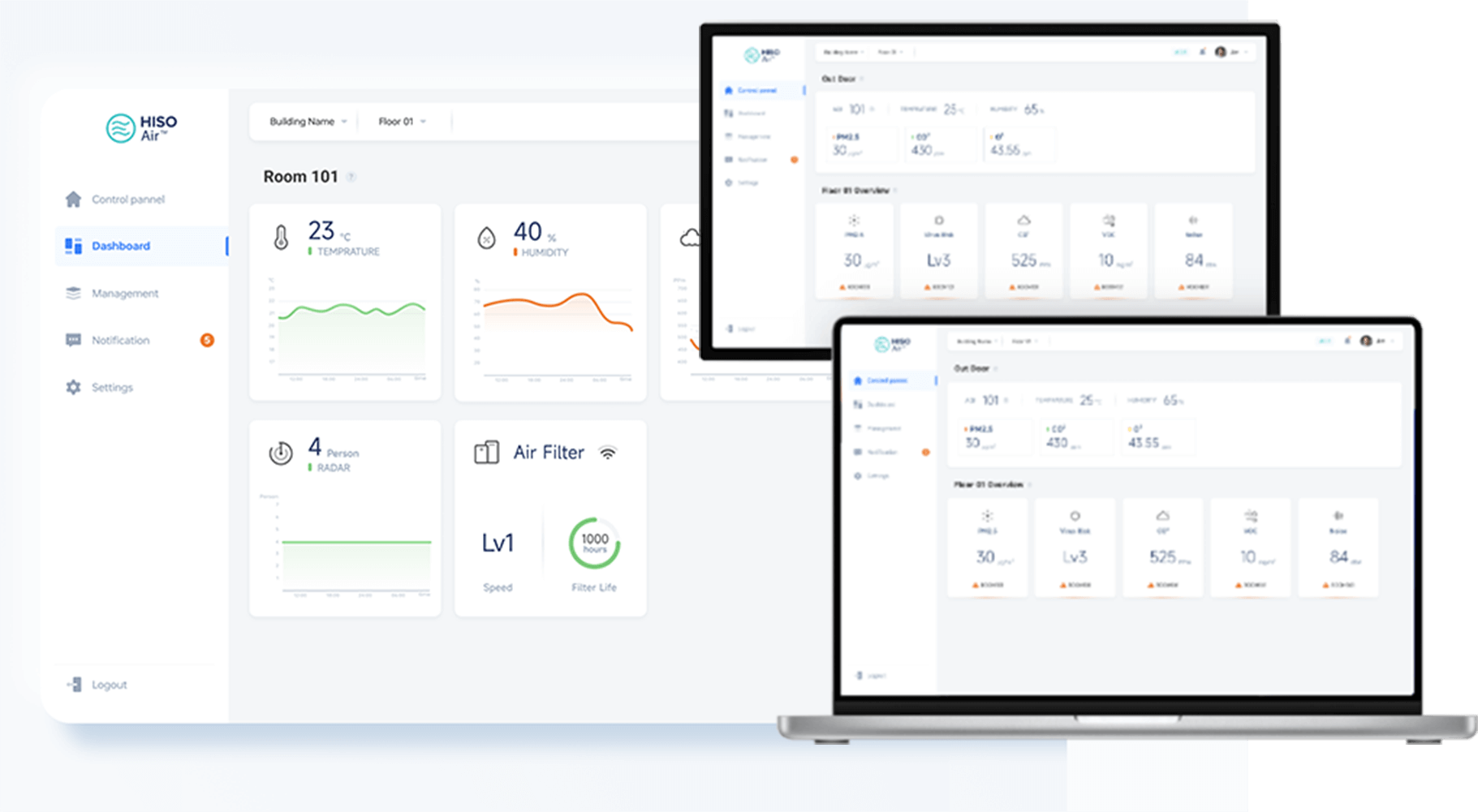
HisoAir Data Center Humidification Solutions
HisoAir has developed specialized humidification systems designed specifically for the unique requirements of data center environments, drawing on decades of experience in precision humidity control across critical applications.
Customized Solutions for Various Data Center Scales
Recognizing that data centers range from small edge computing facilities to massive hyperscale operations, HisoAir offers scalable solutions tailored to specific requirements:
HisoAir EdgeHumid™ Series:
- Compact ultrasonic systems for edge computing facilities and server rooms
- Capacities from 2-20 kg/hr
- Integrated water treatment and control systems
- Minimal maintenance requirements ideal for remote locations
HisoAir DataMist™ Series:
- High-pressure atomization systems for medium to large data centers
- Modular design allowing for 20-500 kg/hr capacity
- Zone-specific control capabilities
- Integrated cooling benefit reducing HVAC load
HisoAir HyperHumid™ Series:
- Comprehensive humidity management for hyperscale facilities
- Hybrid technology combining multiple humidification methods
- Capacities exceeding 1000 kg/hr
- Advanced redundancy and failover features
Each system is engineered with data center-specific requirements in mind, including precision control, reliability, and integration capabilities with building management systems.
Intelligent Control and Remote Monitoring Advantages
HisoAir의 intelligent humidity control systems8 incorporate advanced monitoring and management capabilities that extend beyond basic humidification:
- Real-time humidity mapping across multiple zones
- Predictive analytics for anticipating humidity changes based on IT load fluctuations
- Integration with DCIM (Data Center Infrastructure Management) platforms
- Remote monitoring and control capabilities
- Automated fault detection and diagnostics
- Energy optimization algorithms that adjust operation based on outside air conditions
- Detailed reporting for compliance and efficiency analysis
These intelligent features ensure optimal humidity conditions while minimizing energy consumption and operational costs.
Water Management and Automated Maintenance Features
Water quality management represents a critical aspect of reliable humidification system operation. HisoAir systems incorporate:
- Integrated water conductivity monitoring
- Automatic flush cycles to prevent mineral buildup
- Self-cleaning features for distribution components
- Predictive maintenance alerts based on water quality and system performance
- Water consumption optimization to reduce waste
These automated features significantly reduce maintenance requirements while ensuring consistent performance and system longevity.
Customer Case Study: Hyperscale Data Center Implementation
A leading cloud service provider implemented HisoAir's HyperHumid™ system across a 15MW data center facility, replacing traditional steam humidifiers. The results demonstrated the substantial benefits of advanced humidification technology:
- 94% reduction in humidification-related energy consumption
- 3.2% decrease in overall cooling energy requirements
- Improved humidity stability with ±2% precision (compared to previous ±7%)
- 82% reduction in maintenance hours related to humidification systems
- Estimated annual operational savings of $380,000
- Complete ROI achieved within 14 months
This case exemplifies the significant operational improvements and cost savings available through modern humidification technology properly implemented in data center environments.
Implementation and Integration Best Practices
Successfully implementing advanced humidification systems in data center environments requires careful planning and integration with existing infrastructure and operational practices.
Data Center Design Phase Considerations
Incorporating humidity control strategy during the design phase offers significant advantages:
- Optimal placement of distribution components for uniform coverage
- Integration with airflow management systems
- Proper sizing based on anticipated IT load and environmental conditions
- Coordination with other mechanical systems
- Infrastructure provisions for water supply and drainage
- Space allocation for water treatment equipment
For new construction, a holistic approach that considers humidification alongside cooling, power, and IT infrastructure yields the best results in terms of both performance and efficiency.
Seamless Integration with Existing HVAC Systems
For existing facilities, retrofitting advanced humidification systems requires careful integration with established HVAC infrastructure:
- Compatibility assessment with existing air handling units
- Evaluation of available control systems and integration requirements
- Analysis of current airflow patterns to optimize distribution
- Identification of potential installation constraints
- Development of transition plans to minimize operational disruption
HisoAir's engineering team specializes in retrofit projects, offering comprehensive site assessment and custom integration solutions that maximize benefits while working within existing constraints.
Zoned Control Strategies and Sensor Placement
Effective humidity management in large data centers often requires a zoned approach rather than treating the entire space as a single environment:
- Strategic placement of humidity sensors throughout the facility
- Creation of control zones based on equipment sensitivity and airflow patterns
- Implementation of differential setpoints for various areas
- Coordination of multiple humidification units through a central management system
This approach allows for more precise control while reducing energy consumption by avoiding over-humidification in less critical areas.
Backup and Redundancy Design Considerations
For mission-critical facilities, redundancy in humidification systems is essential to ensure continuous operation:
- N+1 or 2N redundancy configurations for humidification equipment
- Backup water supplies or storage systems
- Redundant power sources for control systems
- Automated failover capabilities
- Regular testing protocols for backup systems
These redundancy measures should be integrated into the facility's overall resilience strategy, with humidification considered alongside power, cooling, and network redundancy.
Future Trends and Innovation Directions
The field of data center humidification continues to evolve, with several emerging trends poised to shape future implementations.
AI-Driven Predictive Control in Humidity Management
Artificial intelligence9 is transforming humidity management from reactive to predictive, with advanced systems capable of:
- Anticipating humidity changes based on weather forecasts and IT load predictions
- Optimizing operation to minimize energy consumption while maintaining ideal conditions
- Identifying potential system issues before they impact performance
- Continuously learning and adapting to facility-specific patterns and requirements
These AI-driven approaches represent the next frontier in efficiency and reliability for data center environmental control.
Liquid-Cooled Data Center Humidity Considerations
As high-density computing drives the adoption of liquid cooling technologies, humidity control requirements are evolving:
- Reduced air cooling requirements changing traditional humidification approaches
- Increased focus on precise dew point control to prevent condensation on liquid cooling components
- Integration of humidity management with liquid cooling systems
- Development of specialized solutions for hybrid air/liquid environments
HisoAir is actively researching optimized humidity control strategies for these next-generation cooling architectures.
Compact Solutions for Edge Computing Facilities
The proliferation of edge computing is creating demand for miniaturized, highly reliable humidification solutions:
- Self-contained systems requiring minimal infrastructure
- Remote monitoring and management capabilities
- Extended maintenance intervals suitable for unmanned facilities
- Robust design for variable environmental conditions
- Energy-efficient operation for facilities with limited power capacity
These specialized systems enable proper environmental control even in challenging edge deployments.
Sustainability and Water Conservation Technologies
As data centers increasingly focus on sustainability metrics, humidification systems are evolving to minimize environmental impact:
- Water reclamation and recycling systems
- Integration with rainwater harvesting
- Advanced water treatment to enable use of non-potable sources
- Hybrid systems that adapt to seasonal conditions to minimize resource consumption
- Life cycle assessment approaches to system selection and operation
HisoAir's research and development efforts include significant focus on these sustainability innovations, with several pilot implementations demonstrating promising results in water conservation and overall environmental impact reduction.
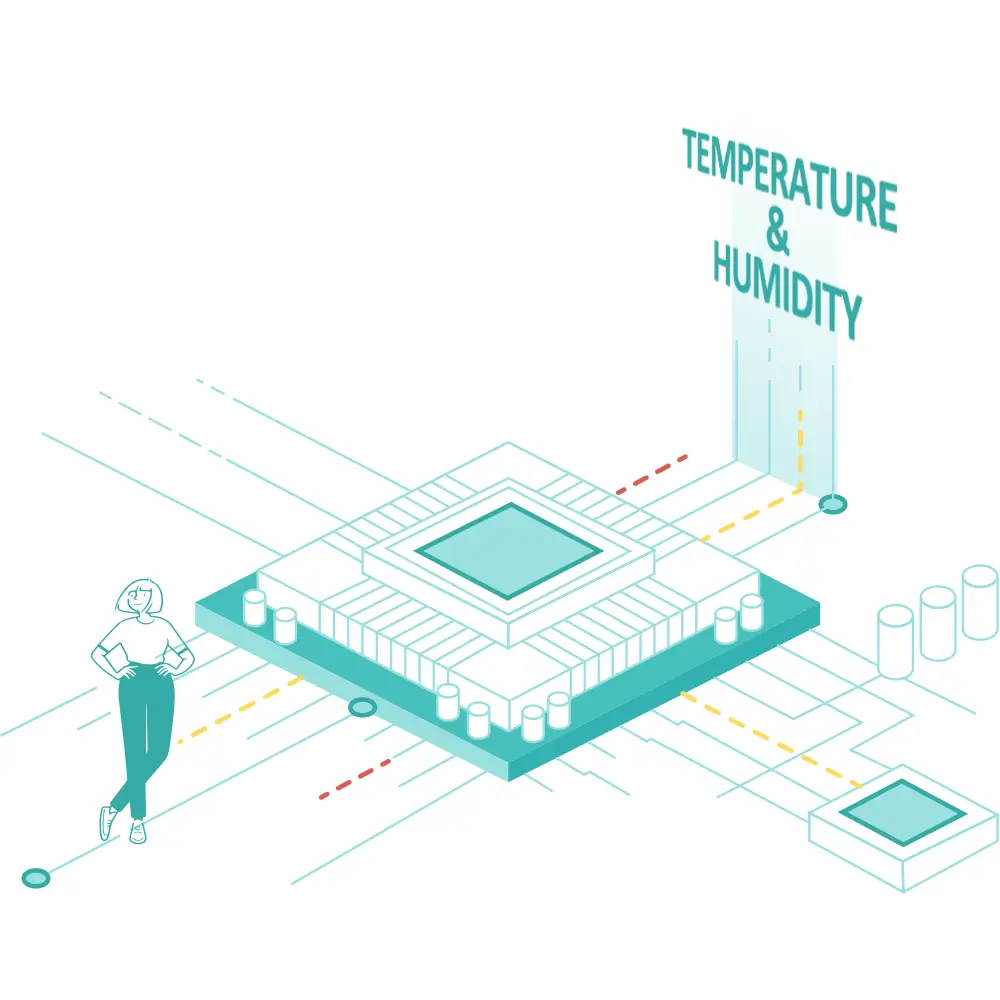
Conclusion: Humidity Control as a Critical Infrastructure Investment
Precision humidity control represents a fundamental aspect of data center infrastructure that directly impacts reliability, efficiency, and operational costs. As computing densities increase and environmental standards evolve, the importance of sophisticated humidification solutions continues to grow.
The selection of appropriate humidification technology should be approached as a strategic decision rather than simply a mechanical specification, with careful consideration of:
- Facility-specific requirements and sensitivities
- Total cost of ownership including energy and maintenance
- Integration with overall environmental management strategy
- Future scalability and adaptability
- Sustainability goals and resource constraints
HisoAir's specialized data center humidification solutions address these considerations through innovative technology, intelligent control systems, and comprehensive support services. By partnering with experienced humidity control specialists, data center operators can ensure optimal protection for their critical infrastructure while minimizing operational costs and environmental impact.
For facilities of all sizes—from edge computing nodes to hyperscale operations—implementing advanced humidification technology represents an investment in reliability and efficiency that delivers measurable returns through reduced risk, lower energy consumption, and extended equipment lifespan.
-
ASHRAE Technical Committee 9.9: Data Center Power Equipment Thermal Guidelines and Best Practices. These standards define the recommended environmental conditions for data centers, including temperature and humidity ranges, and have evolved to allow wider operating ranges as equipment resilience has improved. ↩
-
Humidity Control in Data Centers: Expert FAQs Answered. This resource explains the critical relationship between relative humidity and dew point temperature in data center environments, highlighting why modern facilities increasingly focus on dew point control rather than relative humidity. ↩
-
The Effect of Humidity on Static Electricity Induced Reliability Issues of ICT Equipment in Data Centers. This research quantifies the relationship between humidity levels and electrostatic discharge risk, providing scientific evidence for humidity control recommendations in critical facilities. ↩
-
Data Center Humidification Systems. This resource details the principles and applications of steam-based humidification systems in data center environments, including their advantages for precise control and hygienic operation. ↩
-
Adiabatic Humidification for Data Centers. This analysis explores how adiabatic humidification systems provide both moisture control and cooling benefits, significantly reducing energy consumption compared to traditional steam systems. ↩
-
High-Pressure Atomization Systems for Data Center Humidification. This technical overview explains how micro-mist technology creates ultra-fine water droplets that rapidly evaporate, providing efficient humidification for large-scale facilities. ↩
-
Water Quality Management for Humidification Systems. This guide outlines the importance of proper water treatment for humidification system efficiency, maintenance requirements, and longevity, with specific recommendations for different technologies. ↩
-
Smart Environmental Monitoring for Data Centers. This resource details how intelligent control systems integrate with building management infrastructure to optimize humidity levels while minimizing energy consumption through predictive algorithms and zone-specific management. ↩
-
Artificial Intelligence Applications in Data Center Environmental Control. This forward-looking analysis explores how AI and machine learning are transforming humidity management from reactive to predictive, with significant implications for efficiency and reliability. ↩


